This is our last day in Dakar. The capital, itself, is not rich in tourist attractions, although it’s relatively easy-going and relaxed in comparison with the other West African capitals we’ve visited and the food is simply the best in the region. Dakar does, however, have a major tourist attraction right on its doorstep, Ile de Goree.
Despite its small size (Goree is 900m long and 300m wide, covers 2.7 hectares, and is home to only 1500 permanent residents), the island is an absolute gem; an undisputed highlight of West Africa. Goree is famous, or infamous, for being another prominent slave center; the Cape Coast equivalent of Senegal. We immediately acquire a guide named The Lion (although judging by his crutches and scars he lost more battles than he won), but he has a fair few tales to tell. Some of them may even be true. We learn that Goree is a UNESCO World heritage site and a US$1 tourist tax is levied on each visitor to keep the place clean and tidy. The policy is clearly working as Goree is undoubtedly the cleanest place we’ve visited in West Africa.
Goree is actually an extinct volcano and we walk up a steep path for views over the island and back to the main land. There are also some quite precipitous cliffs on the far side of the island, which appears to be the final resting place of all the collected trash. As the trade in slaves declined in the late eighteenth century, Goree converted to legitimate commerce. The French also heavily fortified the island with huge gun emplacements and bunkers to protect not only Goree, but its interests in West Africa generally. These days the bunkers have been taken over by artists as galleries and homes. There is also a large abstract statue in the shape of a boat to commemorate the black diaspora. Goree is, despite the deluge of visitors, a very calm place to explore full of sandy alleyways, colonial buildings, and contemplative gardens. At least, it is now.
During the height of the slave trade many of the buildings on the island were used as holding cells. These days only one remains, the Maison des Esclaves, a museum and grim reminder of the evil that men do. The stories told to us by The Lion parallel those we heard in Ghana. Slaves were only allowed out of their cells for one hour each day for exercise and to use the bathroom. Apparently on Goree male prisoners were weighed and had to be above 60 kg before they could be shipped out to the Americas on the so-called Middle Passage. Those that didn’t meet the weight requirements were actually fed and exercised to build them up. Perhaps the most prized group of slaves were the young (very young) virgin girls. Often times these girls were raped by their European captors, although in the event that the girls became pregnant the resulting mulatto offspring were considered to be European and thus the children and the mothers were given a much easier life. The remaining, ‘less fortunate’ slaves were shipped off to The Americas through the Gate of No Return, although some of the chained prisoners wriggled free and jumped to their deaths in the water below rather than face the grueling voyage and a miserable life in the New World.
When not describing the myriad acts of debauchery and terror perpetrated on the enslaved Africans of Goree, The Lion ensures, quite effortlessly it has to be said, that Christi and I visit every tourist shop on the island. And there are a lot. For once, though, the souvenirs actually look unique and interesting and Christi and I finally weaken (Christi says I weaken, she is steadfast in her desire not to buy gaudy trinkets. This is actually a bit rich coming from her because on our first visit to Africa she bought all the gaudy trinkets she could find. Perhaps she’s learned her lesson). In the end we purchase a piece of sand art (multi-colored sand stuck to a wooden board). It’s a scene depicting rural life (CFA 10,000; US$20). I was also tempted by another piece as well, a quite stunning portrait of a nubile nude, but Christi refused to let me buy it! Apparently there is a difference between art and pornography.
Back at the harbour we pay The Lion CFA 4,000 for the tour and then settle down to a pleasant lunch overlooking the port. It’s a beautiful location with a small beach, laughing children, and clear aquamarine waters, surrounding buildings of faded pastel yellows and reds.
We return to Dakar later in the day to pack and say our goodbyes to those of the Dragoman tour group that are still in town, including Agatha Christie, John Malkovich, and Sinead O’Connor. Tomorrow we leave the capital and with a few days to kill before our rendezvous with Sheldon Cooper and Ahmed the Finger at the Mauritanian border, Christi and I are going to collect another country; the smallest country in Africa, in fact, The Gambia. This is a spontaneous decision and we don’t really know what we’re doing, but what could go wrong in just a few days? Famous last words.
Blog post by Roderick Phillips, author of Weary Heart a gut-wrenching tale of broken hearts and shattered test tubes.

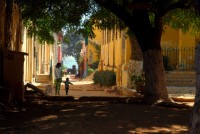
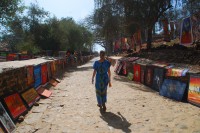
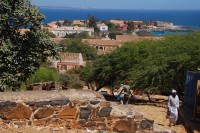
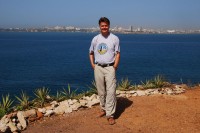
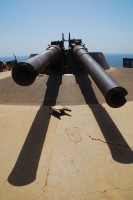
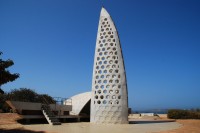
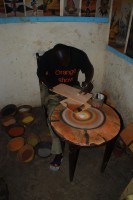
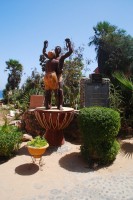
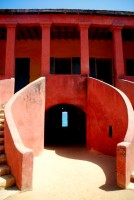
Speak Your Mind